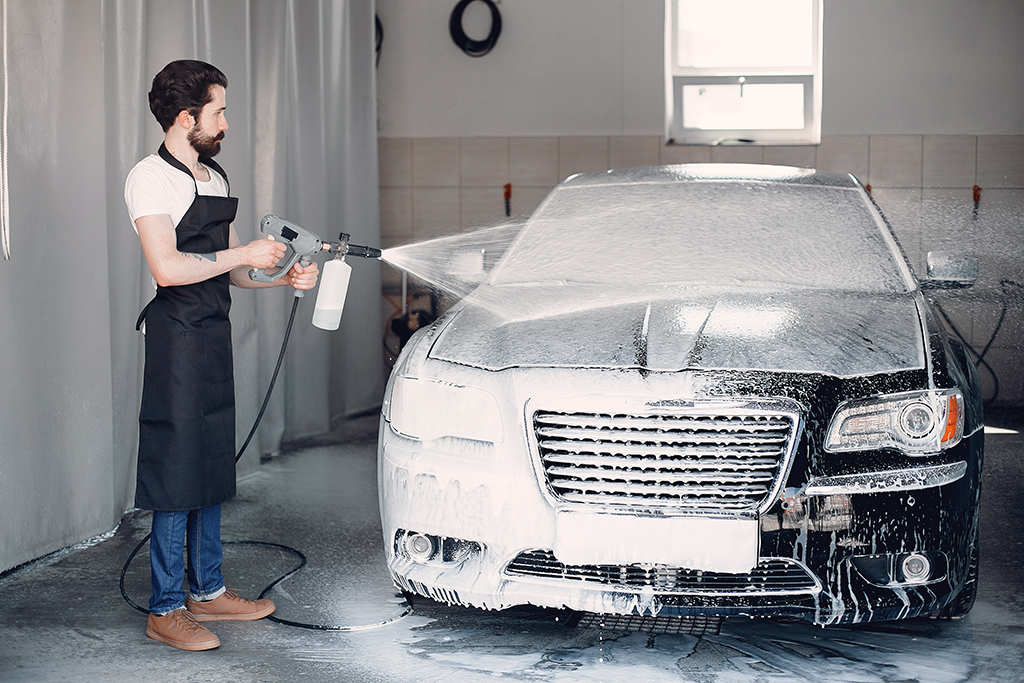Car washing is not just about keeping your car clean, it’s also an art form that requires proper techniques and tools to achieve a flawless shine. In this article, we will provide you with pro tips on how to master the art of car washing and achieve a showroom-worthy shine for your beloved vehicle.
Introduction
Car washing is a fundamental aspect of car maintenance that involves cleaning the exterior and interior of a vehicle to remove dirt, grime, and other contaminants. It not only enhances the appearance of your car but also protects its paint and helps to prevent rust and corrosion. Regular car washing is essential to keep your vehicle looking pristine and maintaining its value. The need of car wash products is very essential especially if the weather is not good or you are always traveling.
Importance of Car Washing
Regular car washing is crucial for several reasons. Firstly, it helps to remove dirt, dust, and debris from the surface of the car, which can cause scratches and swirl marks if left untreated. Secondly, car washing helps to remove harmful contaminants such as bird droppings, tree sap, and road salt that can damage the paint and finish of the car over time. Moreover, car washing also helps to maintain the resale value of the vehicle, as a clean and well-maintained car is more attractive to potential buyers.
Types of Car Wash
There are different types of car wash options available, including self-service car wash, automatic car wash, and hand wash. Each type has its pros and cons, and it’s essential to choose the one that suits your needs and preferences.
- Self-Service Car Wash: This type of car wash allows you to wash your car using the equipment provided at the wash station. It’s a budget-friendly option, but it requires manual labor and may not provide the same level of thorough cleaning as other methods.
- Automatic Car Wash: This type of car wash involves driving your car through a tunnel or bay where automated machines wash your car. It’s convenient and time-saving, but it may not be suitable for cars with delicate finishes or special coatings.
- Hand Wash: This type of car wash involves washing the car by hand using a variety of tools and techniques. It provides the most control over the cleaning process and allows you to pay close attention to different parts of the car. However, it requires more time and effort compared to other methods.
Tools and Equipment for Car Washing
To master the art of car washing, you need the right tools and equipment. Here are some essential items you should have in your car washing arsenal:
- Pressure Washer: A pressure washer is a powerful tool that uses high-pressure water to remove dirt and grime from the car’s surface. It’s ideal for tackling tough stains and dirt buildup, especially on the exterior of the car.
- Foam Cannon: A foam cannon is an attachment that can be used with a pressure washer to create a thick foam that clings to the car’s surface, helping to loosen dirt and grime before washing. It provides an even and thorough coverage, making the washing process more effective.
- Microfiber Towels: Microfiber towels are gentle on the car’s surface and are ideal for drying and detailing. They are highly absorbent and help to prevent swirl marks and scratches.
- Car Wash Soap: Using a high-quality car wash soap is essential for effective and safe car washing. Avoid using household detergents or dish soaps, as they can strip off the car’s wax and damage the paint.
- Wash Mitt or Sponge: A wash mitt or sponge is used for physically washing the car’s surface. Look for one made of soft and non-abrasive material to prevent scratches.
- Wheel Brush: A wheel brush is designed to clean the wheels and remove dirt, brake dust, and grime. Look for one with soft bristles that won’t scratch the wheels.
Preparing for Car Washing
Before starting the car washing process, it’s essential to prepare properly to ensure a successful and efficient washing experience. Here are some steps to follow:
- Choose the Right Location: Find a shaded area or wash your car during the cooler parts of the day to prevent water and soap from drying too quickly, which can leave streaks and water spots.
- Gather Supplies: Make sure you have all the necessary tools and equipment, including the pressure washer, foam cannon, microfiber towels, car wash soap, wash mitt or sponge, and wheel brush, within easy reach.
- Rinse the Car: Start by rinsing the car with water to remove loose dirt and debris. Use a pressure washer or hose with a spray nozzle for thorough rinsing.
- Pre-Washing: Use a foam cannon or a bucket of soapy water and a wash mitt or sponge to pre-wash the car’s surface. This helps to loosen dirt and grime before the main washing process.
Step-by-Step Guide to Car Washing
Now that you’ve prepared for car washing, let’s go through the step-by-step process of washing your car:
- Washing the Exterior: Use a wash mitt or sponge to wash the car’s exterior, starting from the top and working your way down. Use a back-and-forth or circular motion, and be gentle to avoid scratching the paint. Rinse the mitt or sponge frequently in a separate bucket of clean water to prevent dirt and grime from spreading.
- Cleaning Wheels and Tires: Use a wheel brush and car wash soap to clean the wheels and tires. Pay close attention to brake dust and grime buildup, and use a brush with soft bristles to avoid scratching the wheels.
- Washing Windows: Use a glass cleaner and a microfiber towel to clean the windows, both inside and outside. Wipe in a straight motion to prevent streaks.
- Cleaning Interior: Use a vacuum cleaner or a brush to clean the interior of the car, including the carpets, upholstery, dashboard, and console. Use a suitable interior cleaner for different surfaces, and wipe with a microfiber towel.
Proper Techniques for Car Washing
To achieve a flawless shine and avoid damaging your car’s surface, it’s crucial to use proper techniques while washing your car. Here are some tips to keep in mind:
- Use Two Buckets Method: The Two Buckets Method involves using one bucket for soapy water and another for clean water. Dip the wash mitt or sponge into the soapy water, then rinse it in the clean water before dipping it back into the soapy water. This helps to prevent dirt and grime from getting back onto the car’s surface and causing scratches.
- Start from the Top: Always start washing your car from the top and work your way down. This way, you prevent dirt and debris from spreading to already cleaned areas, and you ensure that the dirtiest parts, such as the lower panels, are cleaned last.
- Use Gentle Pressure: Avoid using excessive pressure when using a pressure washer or scrubbing with a wash mitt or sponge. Too much pressure can damage the paint or leave swirl marks. Use gentle, even pressure and let the cleaning agents do the work.
- Dry Properly: After washing, use microfiber towels or a blower to dry the car thoroughly. Avoid letting the car air dry, as it can leave water spots and streaks.
- Avoid Abrasive Materials: Do not use abrasive materials, such as rough sponges or brushes, as they can scratch the car’s surface. Stick to soft and non-abrasive materials, such as microfiber towels and soft bristle brushes.
Maintaining Your Car’s Shine
After giving your car a flawless shine, it’s important to take steps to maintain it. Here are some tips to keep your car looking its best:
- Regular Washing: Wash your car regularly, ideally once a week or every two weeks, to prevent dirt and grime from building up and damaging the paint.
- Use Quick Detailer: Use a quick detailer spray in between washes to remove light dirt and maintain the shine. Spray it onto a microfiber towel and wipe gently.
- Waxing: Apply a coat of wax to your car’s exterior every few months to protect the paint from UV rays, dirt, and other environmental contaminants. Waxing also helps to maintain the shine and extend the life of your car’s paint.
- Avoid Harsh Chemicals: Avoid using harsh chemicals, such as acidic or abrasive cleaners, on your car’s surface, as they can damage the paint and strip off the wax.
- Parking Carefully: Park your car in shaded areas or use a car cover to protect it from direct sunlight, bird droppings, tree sap, and other elements that can damage the paint.
Conclusion
Mastering the art of car washing requires the right tools, techniques, and maintenance routine. By following the steps and tips outlined in this article, you can achieve a flawless shine for your car and keep it looking its best for years to come.



